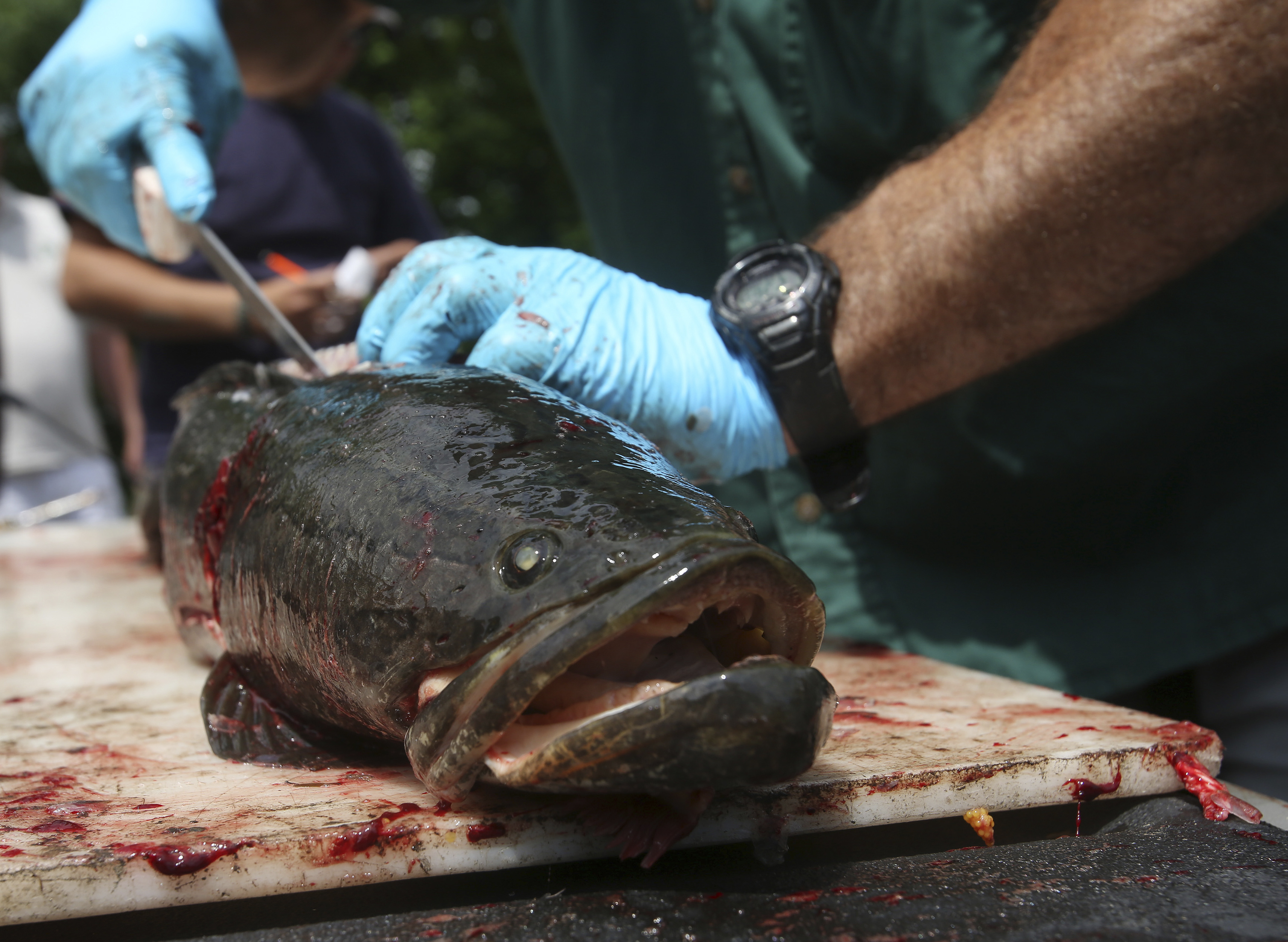Want to get rid of invasive species? Eat them.
This new dining craze lets you eat a delicious meal and help the environment all at once

An out-of-towner at a Kentucky restaurant might be hooked by the sound of the Kentucky carp special. That preparation sure sounds tasty, all browned in butter and served atop a sweet potato puree. Perhaps it's a regional delicacy, caught locally just this morning.
Perhaps, too, you know it by its more familiar name: Asian carp.
The notorious jumping fish that has body slammed fishermen from Arkansas to Illinois is now making its way onto menus in the Bluegrass State and beyond, part of a larger trend of embracing invasive species at the dinner table. Call it culinary conservation: using invasive animals to cook sustainably, which, in turn, puts a dent in populations that are dangerously altering ecosystems. It's estimated that invasive species cause $120 billion in economic damage in the United States each year.
The Week
Escape your echo chamber. Get the facts behind the news, plus analysis from multiple perspectives.

Sign up for The Week's Free Newsletters
From our morning news briefing to a weekly Good News Newsletter, get the best of The Week delivered directly to your inbox.
From our morning news briefing to a weekly Good News Newsletter, get the best of The Week delivered directly to your inbox.
The problem of invasive species — which proliferate quickly in the absence of natural predators, outcompeting native species for food and habitat space — is hardly new. As long as people have traveled and traded, organisms of all kinds have gone along for the ride; they cling to ships' hulls or swim in their ballast water, hide out in wood, and attach themselves unseen to clothing and luggage. Of course, sometimes they're very much seen, deliberate imports as with the stock of domestic pigs Hernando de Soto brought to Florida in the 1500s. Or, far more recently, the Asian carp that were brought to the southern U.S. to chow down on the algae that was blooming in wastewater treatment plants and aquaculture ponds. Then they escaped.
Among the invasive species most frequently turning up on dinner plates are Asian shore crabs, Chesapeake Bay blue catfish, and northern snakehead (rebranding suggestions welcome). Another is lionfish, a voracious orange-and-white striped fish that has infiltrated the Atlantic, particularly off the coast of Florida, and the Caribbean, decimating populations of smaller fish that live along the offshore reefs. Lionfish sport venomous spines on their backs that make hunting them — they are typically caught by spear or net — a challenge. (Iron Chef America producers considered building an episode around the fish, but decided it posed too big a danger to chefs rushing to grab the secret ingredient.) But chefs say the divers' effort is worth it: Peel back that spiked layer and you have a mild flaky white meat that works in an array of dishes. Whole Foods has begun selling it in its 26 Florida stores.
A number of organizations have dedicated themselves to advocating for control through consumption, including Eat the Invaders and Invasivore.org. The Institute for Applied Ecology oversees the Eradication by Mastication campaign, which sponsors the annual Invasive Species Cookoff in Oregon. The most recent installment was held in August; among the dishes entered were pulled nutria, smoked blackberry lime starling tacos, and Cajun fried bullfrog legs. The institute also sells an invasive species cookbook, so you can learn how to make some nutria for yourself (crockpots really can do it all).
Then there are the restaurants that are getting behind the cause. At the forefront has been Miya's Sushi in Connecticut, which has long had an invasive species section on its menu. Think sashimi made with lionfish and Asian carp, and several options featuring blue catfish; earlier this year, head chef Bun Lai opened a pop-up restaurant in Miami Beach called Prey that operated on the same principles. In New York City, the Caribbean-themed Norman's Cay has adopted a "lionfish mission" in the name of making a positive ecological impact; it serves the fish grilled, fried, and in tacos. Thip Khao in Washington, D.C., features snakehead on the menu.
A free daily email with the biggest news stories of the day – and the best features from TheWeek.com
Some worry that serving up invasive species will create demand for a food that shouldn't be available in the first place — and thus encourage its perpetuation — but the sheer size of invasive species populations like the Asian carp makes that a remote possibility. The fertile fish lays one million eggs a year, and at least one of the four species of Asian carp are found in the waters of 45 states.
On the business side, Asian carp's numbers work in restaurants' favor. In Kentucky, chefs pay half the price for the fish than they do more more expensive seafood like Chilean sea bass. Not only that, on the supply side, the state pays commercial fishermen an extra five cents per pound to encourage them to set their sights on carp rather than catfish.
It all sounds like a win-win. But seriously, any thoughts yet on renaming that snakehead?
Alexis Boncy is special projects editor for The Week and TheWeek.com. Previously she was the managing editor for the alumni magazine Columbia College Today. She has an M.F.A. from Columbia University's School of the Arts and a B.A. from the University of Virginia.


